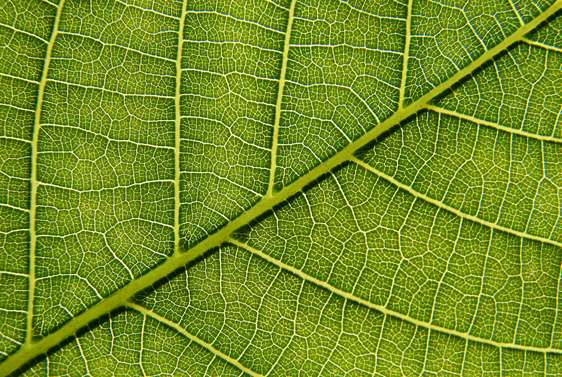Cells work tightly together to form the water-conducting vascular tissue of plants

Plants transport water in pipe-like structures made of dead and empty cells within a vascular tissue called xylem. Sacha Escamez concludes in his doctoral dissertation that different cell types work together to build the 'water pipes' in the xylem, to a greater extent than previously thought. This new insight can be used in modifying and improving properties of woody biomass.
Xylem vascular tissue in plants (which is called 'wood' in trees and bushes) is a very important element because it transports water from roots to leaves while providing mechanical stability to the plant. The water-conducting parts of the xylem are formed after specific cells 'self-destruct' as part of a programmed cell death. These cells that die are also emptied, leaving hollow cell walls with their ends open, thus forming pipe-like structures.
Sacha Escamez has participated in discovering that these 'self-destructing' cells make sure to protect the surrounding cells from potential damage connected with the former's programmed cell death. Meanwhile, the surrounding cells provide the 'self-destructing' cells with molecules called lignins, which contribute to building strong cell walls. The reinforcement of the walls of the 'self-destructing' cells by lignins is crucial in order to efficiently transport water. On the other hand, high amounts of lignin hinder the use of woody biomass for various applications.
The new understanding of the extent of cellular collaboration during wood formation has implications for the quality and the chemical composition of wood.
"This new knowledge is not only valuable from a basic research point of view; it is also an insight that can be used to modify and improve the properties of woody biomass, in particular with the aim of producing second-generation biofuels and biochemicals," says Sacha Escamez.
Second-generation biofuels is a generic term for biofuels produced from various types of biomass which do not compete with the production of food crops. Hence, it is a type of biofuels which can mainly be produced from wood. Biochemicals are chemicals that have been obtained through the conversion of plant biomass.
Sacha Escamez has conducted the experiments on the model plant Arabidopsis thaliana.
More information: Xylem cells cooperate in the control of lignification and cell death during plant vascular development: umu.diva-portal.org/smash/record.jsf?pid=diva2%3A900504&dswid=-9012
Provided by Umea University



















